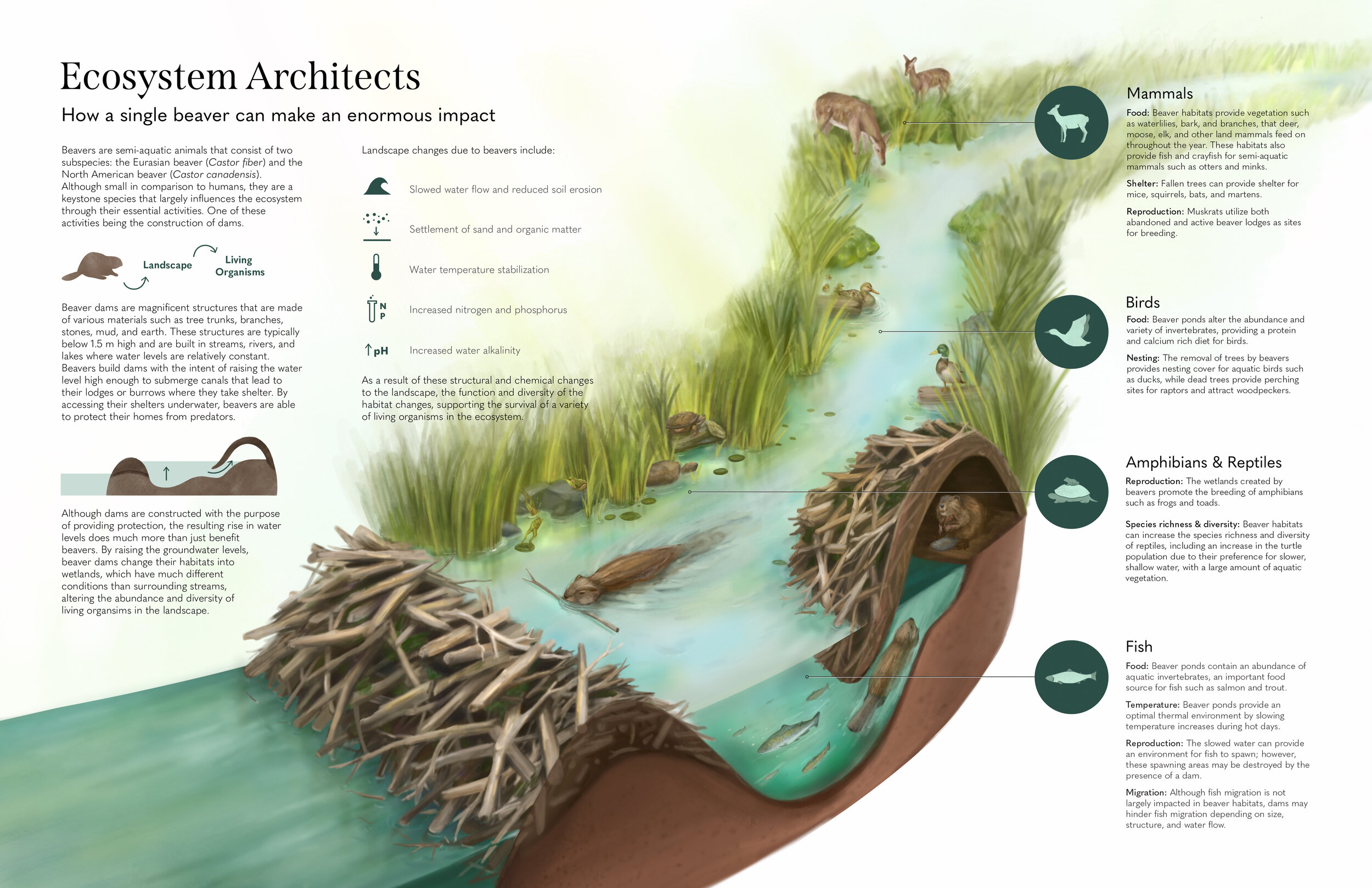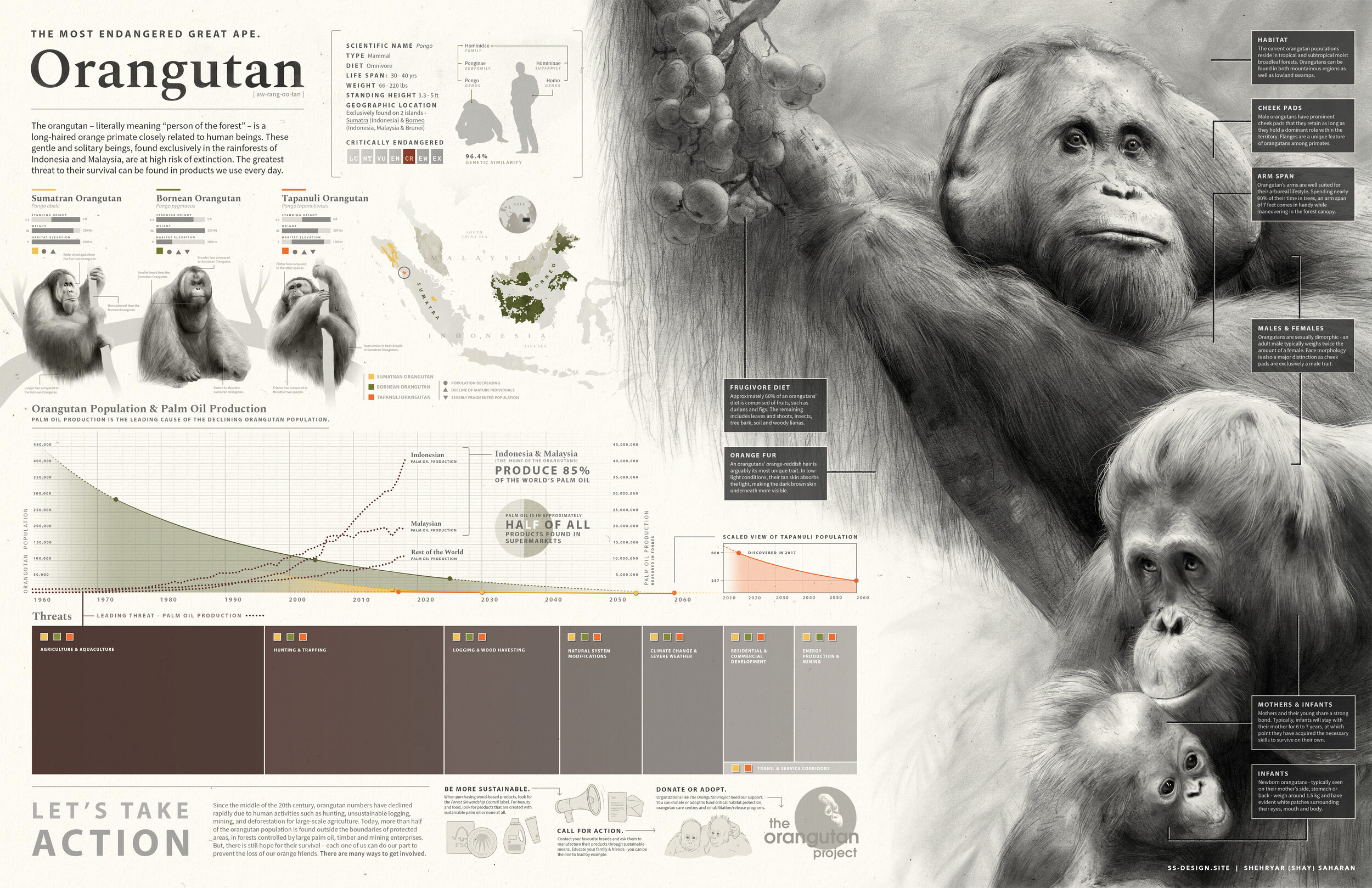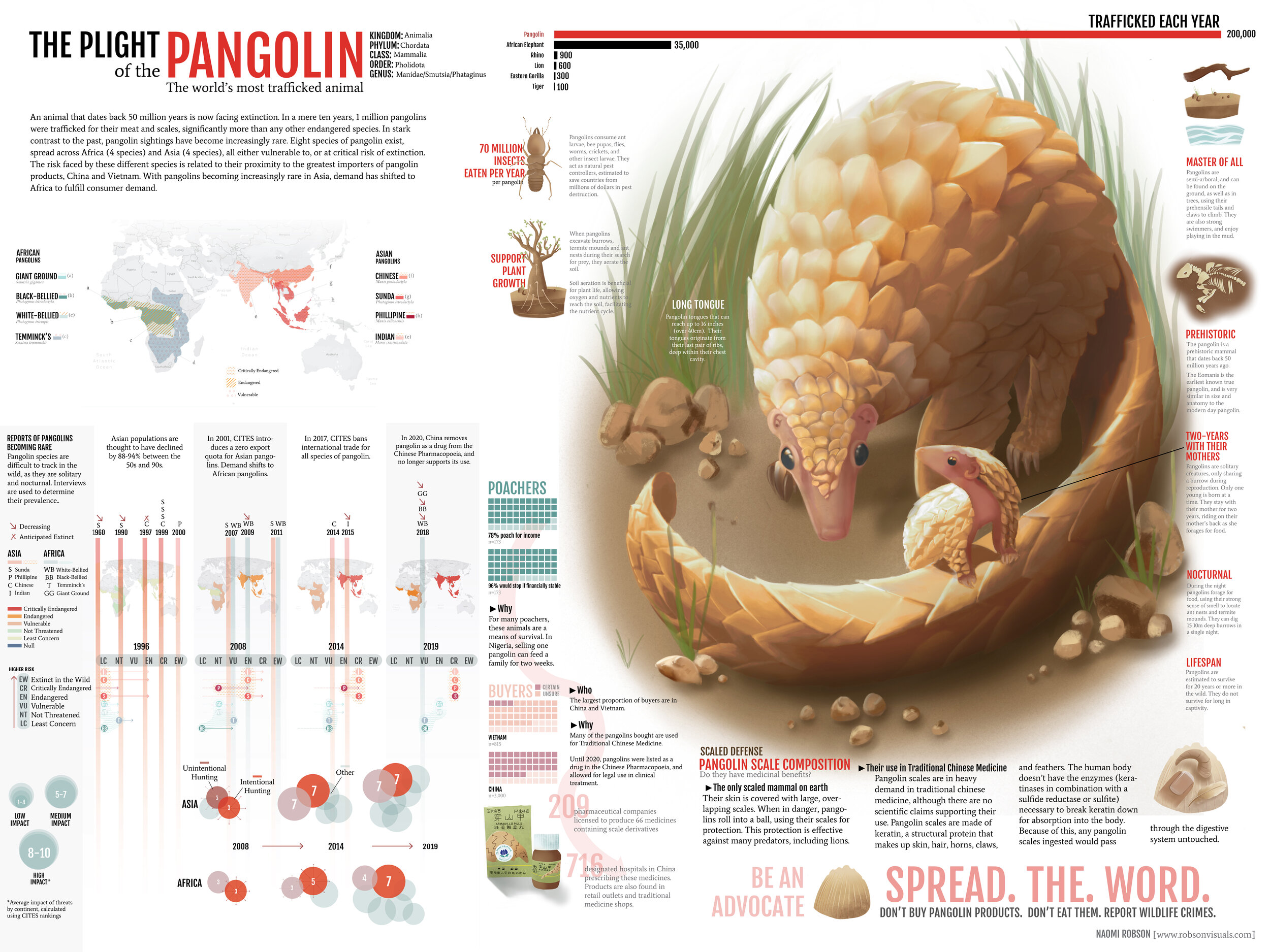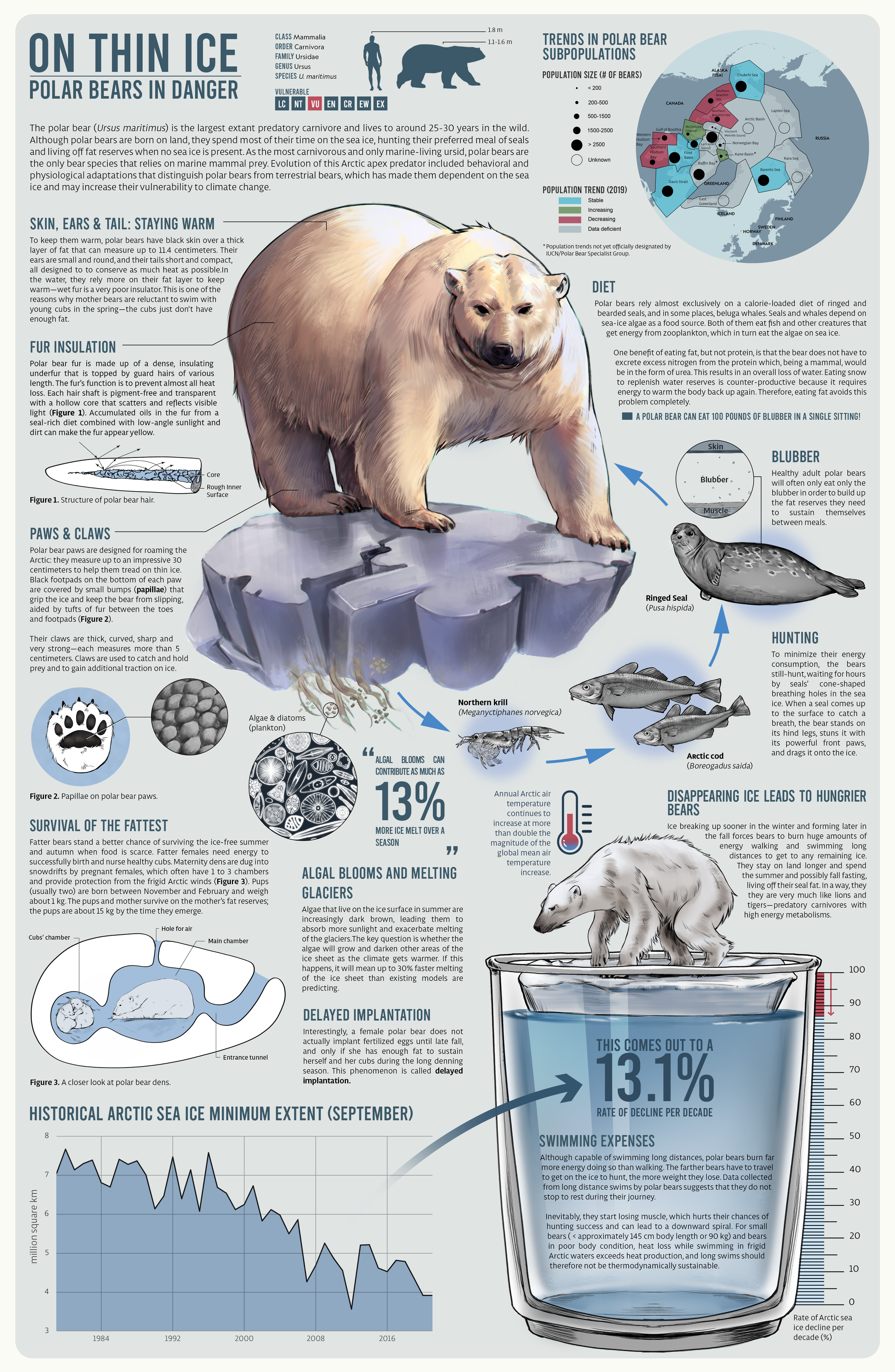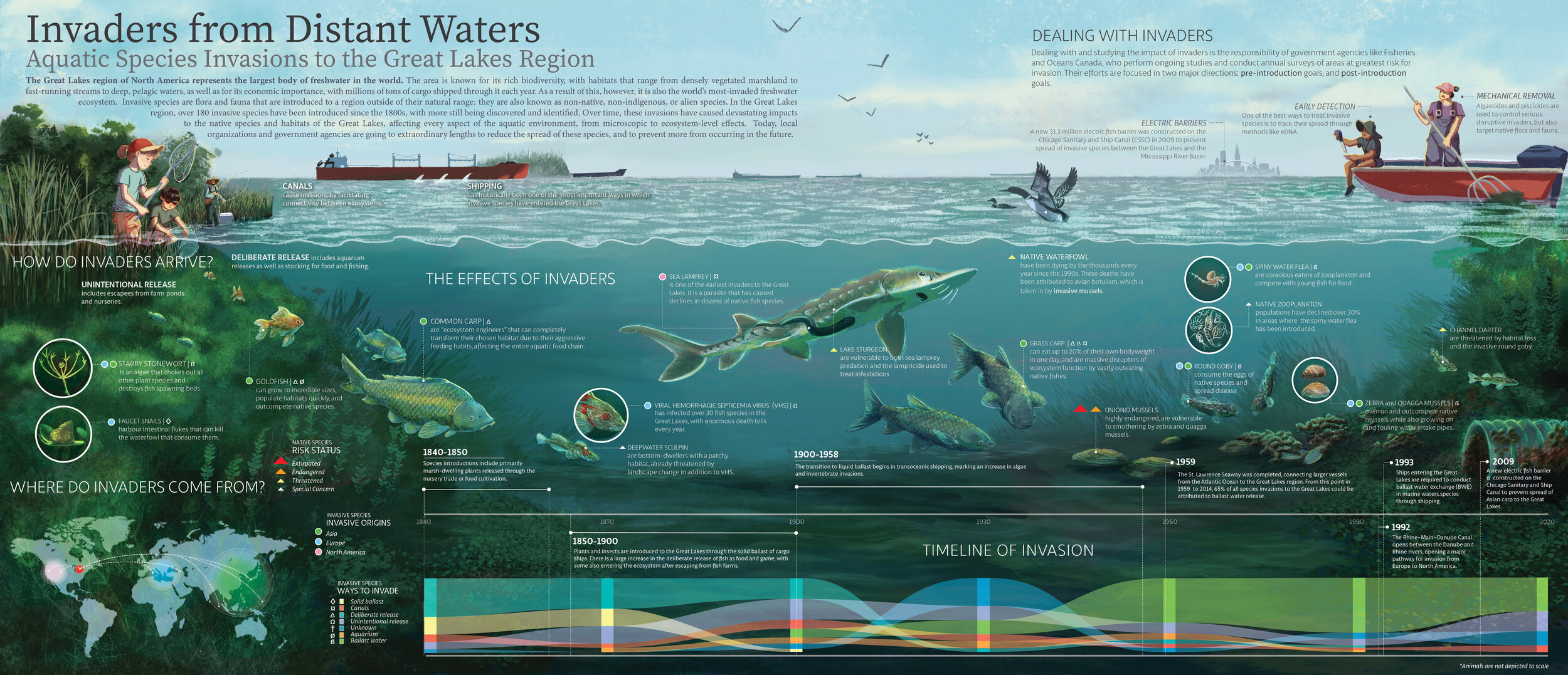9:35 a.m.
Year I students in the Master of Science in Biomedical Communications recently created information graphics in partial fulfilment of the course requirements for MSC2023H Information Design.
The graduate students' projects attempt to clarify complex medical or scientific subject matter for a specific target audience.
"Part of the whole process is understanding how to appropriately encode visual variables, and how to make information pop by manipulating pre-attentive features in the design of the graphic," says Jodie Jenkinson, course instructor, associate professor and director of the Biomedical Communications program.
In their first year, Biomedical Communications students are trained in several subjects including information design. They are taught how to create clear information hierarchies in the design of visual displays. This includes the purposeful ordering and integration of graphical elements and text.
Leveraging human visual perception
"One important goal of information design is to attract the attention of the viewer through the manipulation of visual elements. This increases engagement and furthers the impact of the communication,” says Jenkinson. "But more importantly, things that might be difficult to discern in a block of raw data can become crystal clear when you map that data to a graphical representations."
She says that human visual perception is attuned to pattern-finding and comparison. Trends and relationships can often be understood from a properly designed image far more easily than they can from a table of data or a paragraph of text.
The brain’s visual cortex, and the areas that surround it, have evolved to find patterns and make comparisons. “Biomedical communications specialists use information design to engage that uniquely powerful part of the brain.”
Information graphics produced by: Amy Assabgui (Ecosystem Architects), Viktoriya Khymych (On Thin Ice), Naomi Robson (The Plight of the Pangolin), Shay Saharan (The Most Endangered Great Ape–Orangutan), and Aimy Wang (Invaders from Distant Waters).

